K-State Landmarks
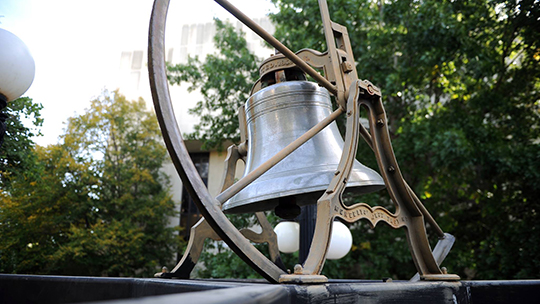
Bluemont Bell
Older than all the buildings on K-State's campus, the Bluemont Bell, the original school bell for Bluemont Central College, rests in the quadrangle west of Bluemont Hall. It was donated to K-State in 1861.

K-Hill
The 80-foot-tall KS letters overlooking Manhattan became a historic landmark in 1921 when the letter "K" was constructed at a cost of $350. The "S" wasn't added until 1930 by the Sigma Tau honorary. The letters are located next to the Kansas River bridge.
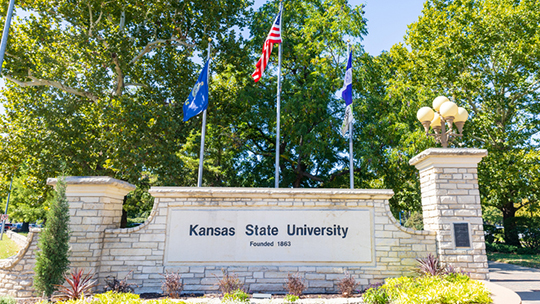
Higinbotham Gate
In 1989, the Higinbotham Gate was added to K-State's historic limestone wall in the southeast corner by Aggieville. Masons set back the wall from the intersection to create a plaza and stone signage to mark the university campus.
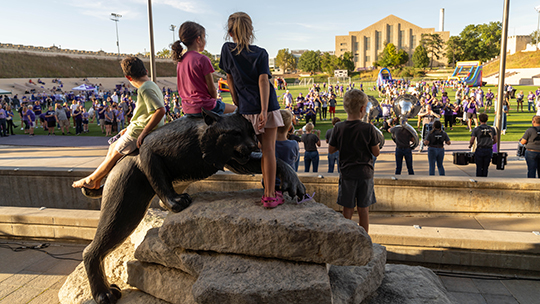
World War I Memorial Stadium
Memorial Stadium, which sits on the southwest corner of campus behind the K-State Alumni Center, was completed in 1924. It serves as a memorial to K-State students and graduates who died during World War I. Primarily, it was used as the football stadium until 1968. From 1946 into the 1960s, K-State housed students in the east and west Memorial Stadium dormitories. Since then, it has served as classroom and office space, a location for club sports, Homecoming pep rallies and many other activities. Memorial Stadium now houses the Purple Masque Theatre in West Stadium and the Berney Family Welcome Center in East Stadium.
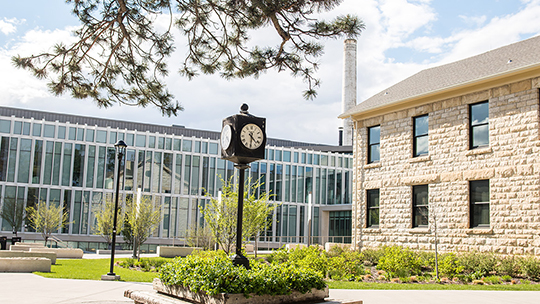
Campus Clock
The clock that stands north of Holtz Hall was provided by donations from the classes of 1968, 1971, 1973 and 1974. Each face of the four-sided clock is inscribed with one of these class years.

Aggieville
The popular shopping and eating area that serves K-State students has been part of the K-State tradition since 1889. The first Aggieville business was a laundry service that later expanded to include school supplies and a barber.
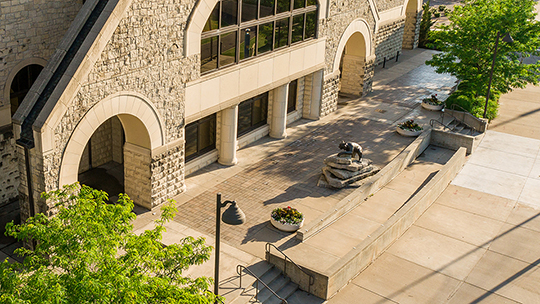
Sidewalks and Pavers
K-State alumni and friends have many opportunities to leave their mark on a spot they love full well. Pavers can be personalized for installation on the K-State Alumni Center’s Johnson Terrace near the Wildcat statue. Additionally, the Senior Sidewalk, located on Martin Luther King Jr. Drive immediately east of Memorial Stadium, features personalized stones; the first year students had the opportunity to make a donation and in return be honored with a stone in the sidewalk was 2000. K-State fans also can see their names and messages on a Legacy Brick in the West Stadium Center Plaza at Bill Snyder Family Stadium.
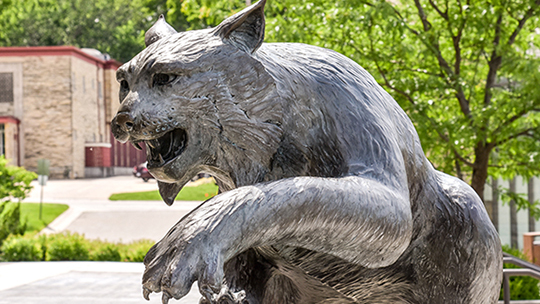
K-State Alumni Center’s Wildcat Statue
Salina artist Richard “Dick” Bergen ’63 and son Rich Bergen ’86, ’98 created the 7-foot bronze Wildcat statue overlooking the Alumni Center's Johnson Terrace. Funding for the iconic statue was provided by Jack and Donna Vanier, Manhattan, Kansas. The statue was unveiled Nov. 1, 2003, and has since been the backdrop of many family, friend and graduation photos.

KSU Obelisk
The Bergen father-son artistic team also designed the KSU Obelisk, located at the east entry of the Alumni Center. The obelisk, which was dedicated Sept. 20, 2014, is an 18-foot, limestone and stainless steel sculpture that features the K-S-U letters and two bronze plaques depicting the words of both the K-State Fight Song and K-State’s Alma Mater. Two sides of the monument are adorned with Wildcat paw prints in recognition of the university’s mascot. The obelisk was made possible through a gift from Dan ’71, ’75, ’87 and Cheryl ’72, ’79 Yunk, Manhattan, Kansas, and was constructed and installed by Compton Construction Company in Wichita, Kansas, owned by Gib ’80 and Brenda ’77 Compton.
